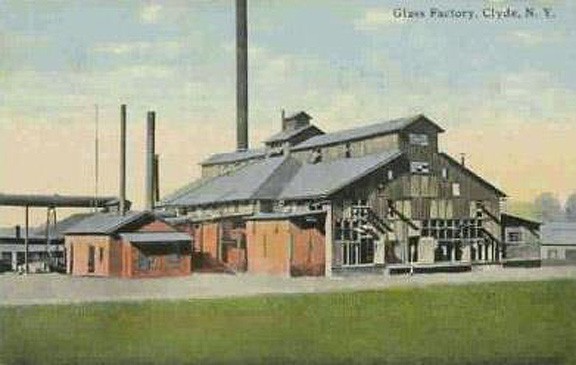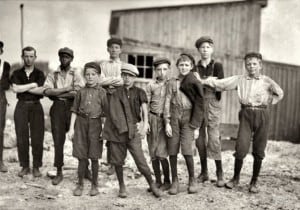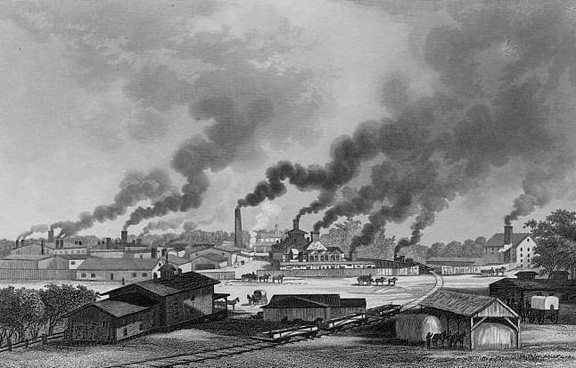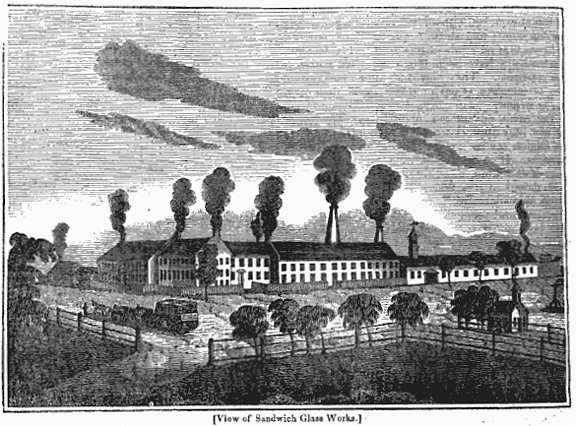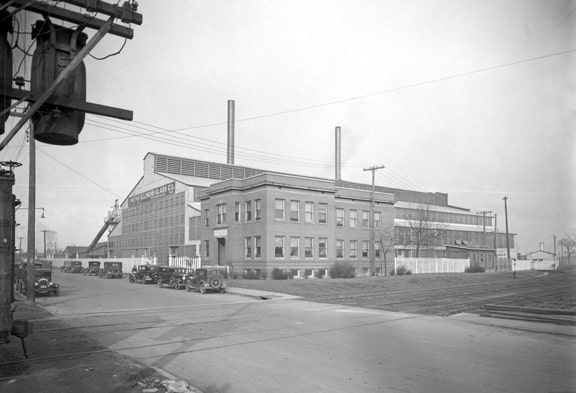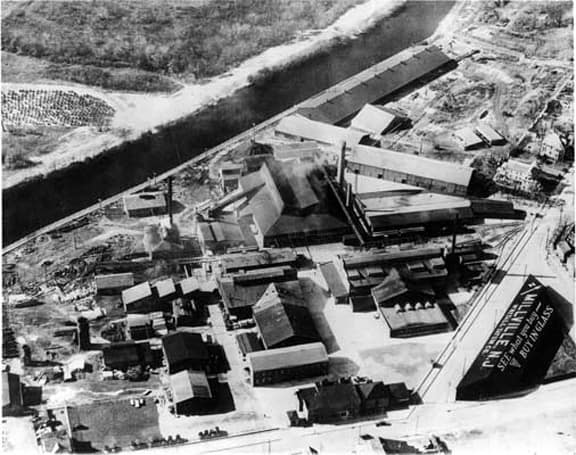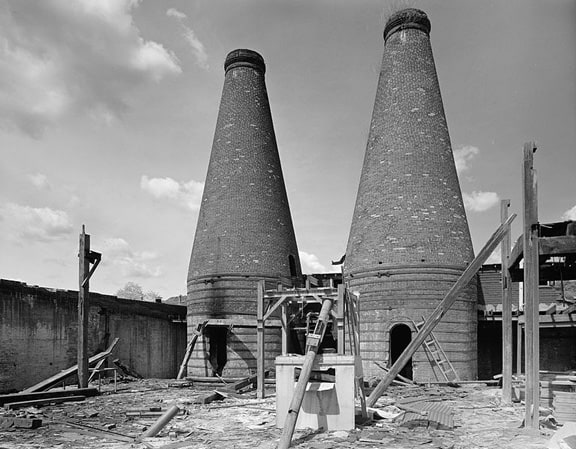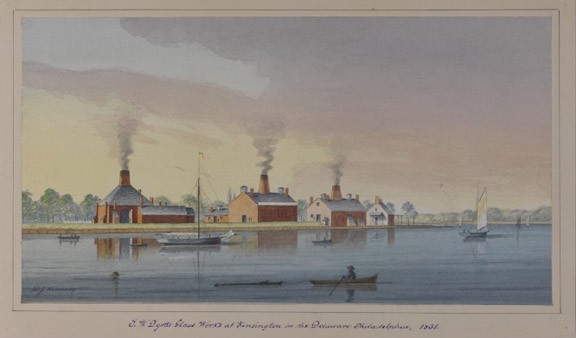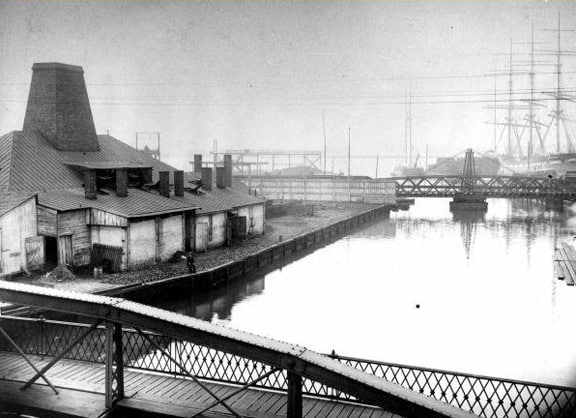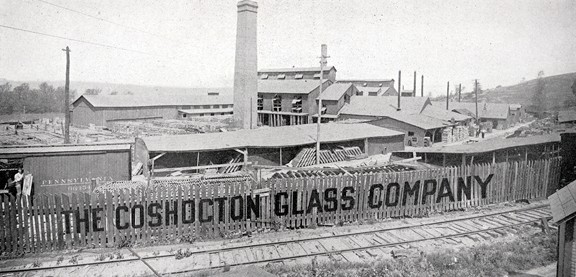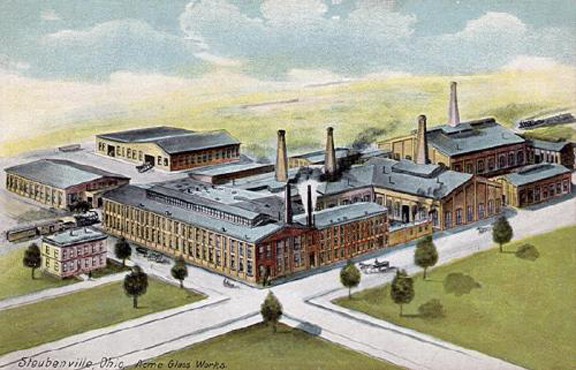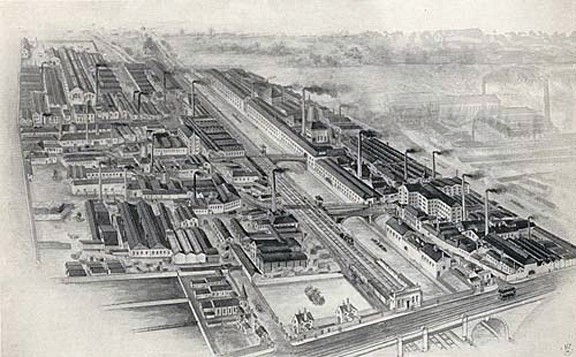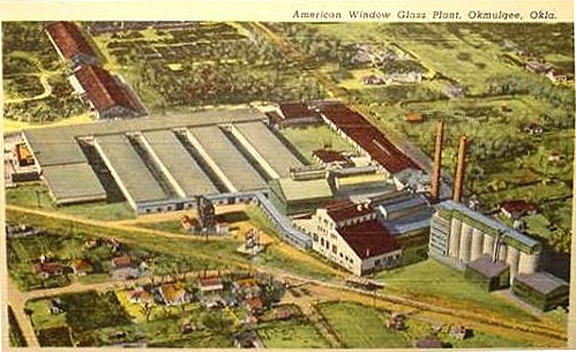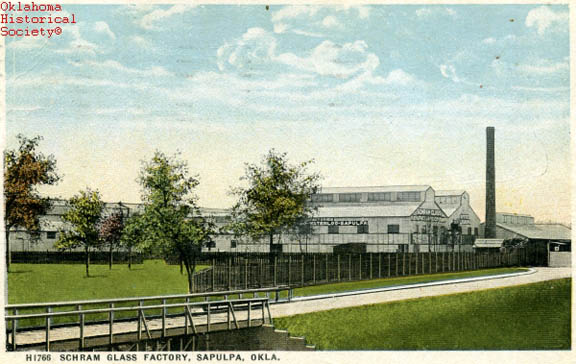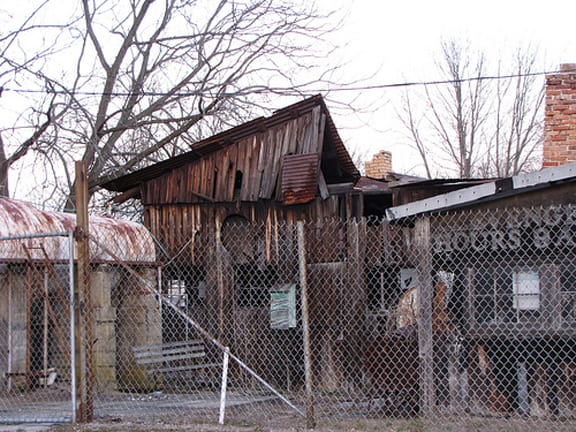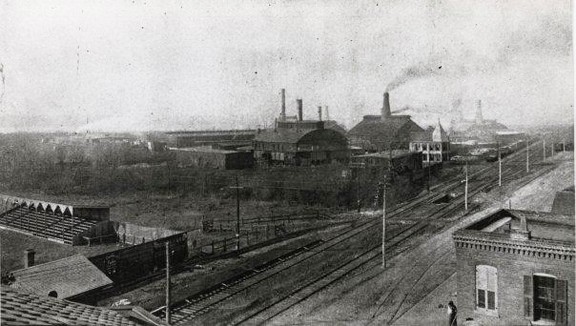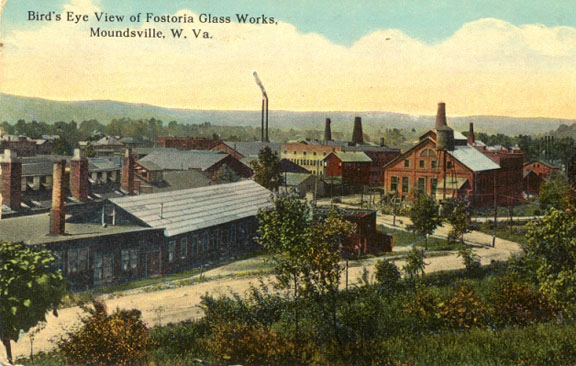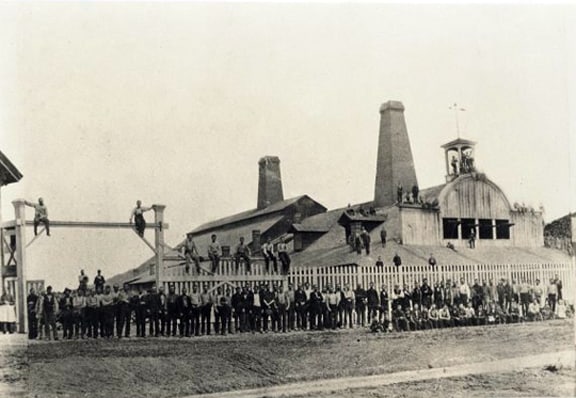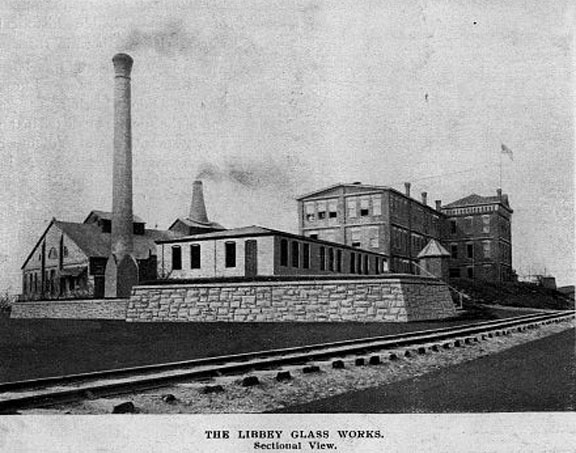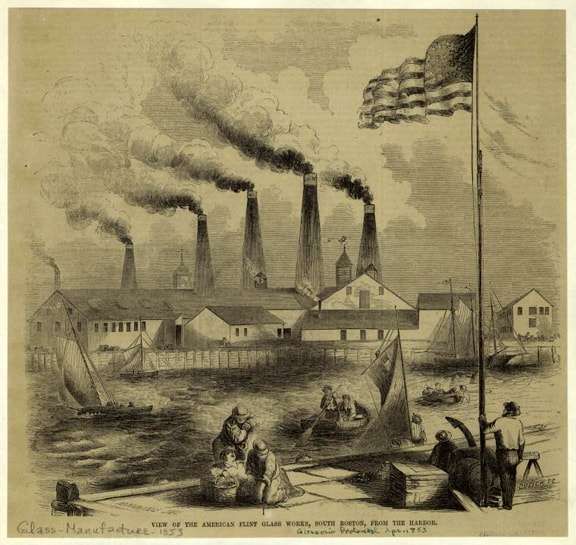To a little sand, a little alkali, and a little limestone, add considerable heat and a still greater amount of skill, might be taken as a brief recipe for the manufacture of a glass bottle.
Popular Science Monthly/Volume 36/December 1889/Glass-Making III
Glass Works and Glass Factories – Hell on Earth?
08 February 2012
![]() Yesterday I did a post titled “Boys in Glass Houses – Taking on the Mannerisms of Men” that left me wondering about the factories and glass works that the lads worked in. There are a surprisingly few pictures and resources of these dark, hot and dirty environments. I suppose that taking pictures of factories were not consider vogue or as architectural wonders worthy of documentation. Anyway, here are some pictures that I found.
Yesterday I did a post titled “Boys in Glass Houses – Taking on the Mannerisms of Men” that left me wondering about the factories and glass works that the lads worked in. There are a surprisingly few pictures and resources of these dark, hot and dirty environments. I suppose that taking pictures of factories were not consider vogue or as architectural wonders worthy of documentation. Anyway, here are some pictures that I found.
As we see and identify the iconic cooling towers of a Nuclear Power Plant from afar we can surely suspect that persons approaching the vicinity of a glass factory could identify the smokestacks and oven towers of the glass works, even without the smoke that must have been constant.
“Am afraid that it makes me a little sad, if not a tad guilty, elevating these orbs of ours to such an elevated position when so many were “born” of such dark, hot, filthy, unhappy circumstances, conditions.”
Jeff (Froggy) Burkhardt
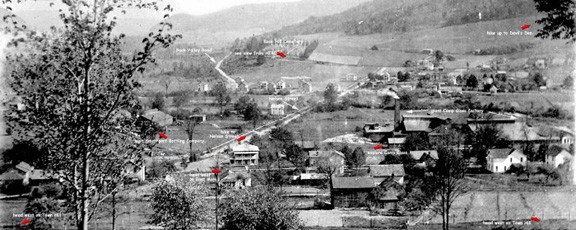
A rare photo of Smethport “Town Hill” showing two glass factories and the surrounding Smethport, PA. region (Camp Glass Company factory on right with smokestack and Smethport Bottling Company on left)
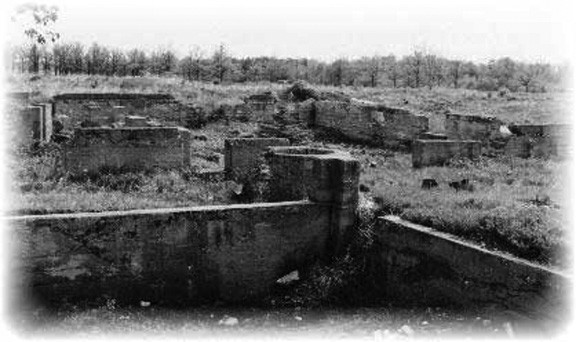
The Manitoba Glass Works Historic Site is the site of the first glass container factory in Western Canada. It was built in 1906 by Joseph Keilback and his partners. Glass-blowers from Poland and the United States, aided by local labor, used silica sands to produce bottles for breweries and soft drink companies in Winnipeg, which served the prairie market. Semi-automatic machines were soon installed to increase production. Winnipeg businessmen took over and enlarged the plant between 1909 and 1911. The new company expanded its production to include jars, medicine and ink bottles. At its peak it employed 350 workers.
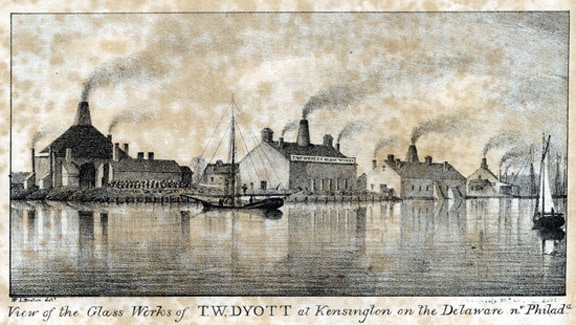
View of the Glass works of T. W. Dyott at Kensington on the Delaware nr Philada., Lithograph by Kennedy & Lucas after William L. Breton, 1831. (The Library Company of Philadelphia)
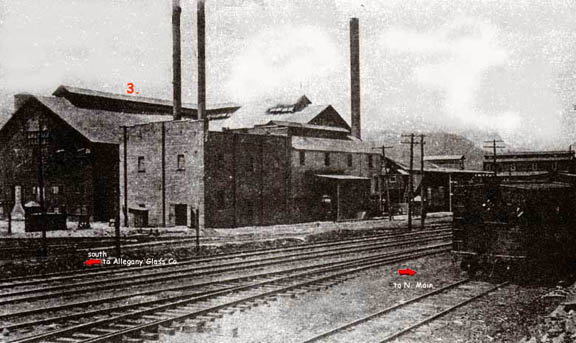
1899 Appert Glass Company (In 1901 consolidated into Mississippi Glass Company ) Port Allegany, Pennsylvania
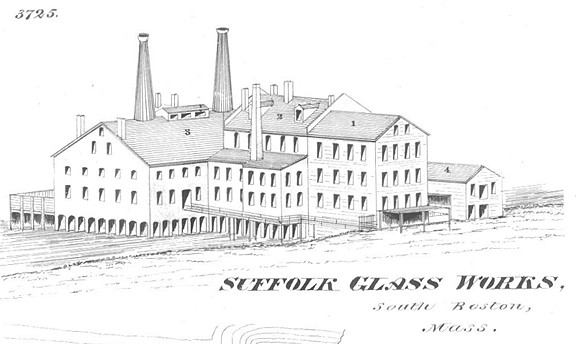
To a little sand, a little alkali, and a little limestone, add considerable heat and a still greater amount of skill, might be taken as a brief recipe for the manufacture of a glass bottle.
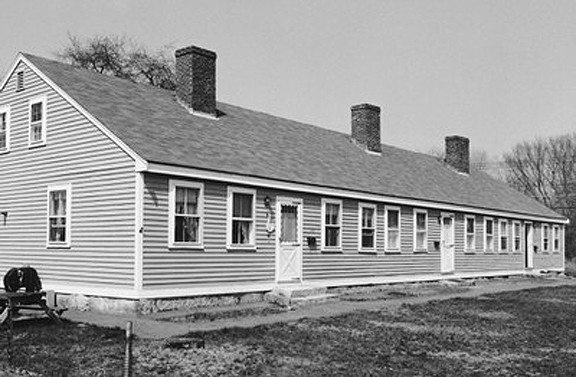
Chelmsford Glass Works Long House (Lowell, Mass), 139-141 Baldwin Street, ca. 1820, National Register of Historic Places, The Chelmsford Glass Works Long House is the only remaining example of housing erected by the company for its workers. Located in what was once part of Chelmsford, the glass works was established in 1802 and was one of the earliest industries in the area. At its peak, the company employed members from about twenty families with most of the skilled workers being German immigrants.
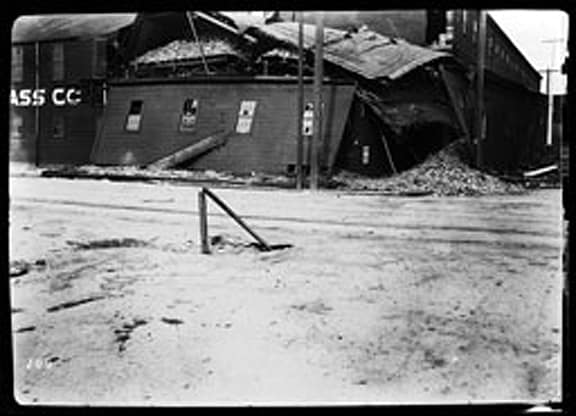
Photograph of an exterior view of the Pacific Coast Glass Works (approx: 1902 – 1928), showing earthquake damage, San Francisco, 1906. The large, wooden buildings stands across the wide street at center with its right side demolished by the earthquake. The front wall on the right side has shifted and is now gently leans on the remaining walls. The roof is broken into large slabs and the interior walls have crumbled and spilled through the right side. The electrical poles which stand along the right side of the building still stand while piles of debris crowd their bases. Two pieces of wood stand upright in the dirt road in the foreground.

